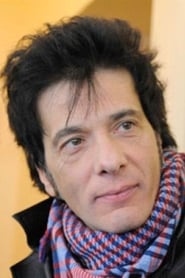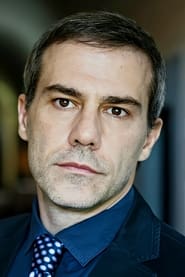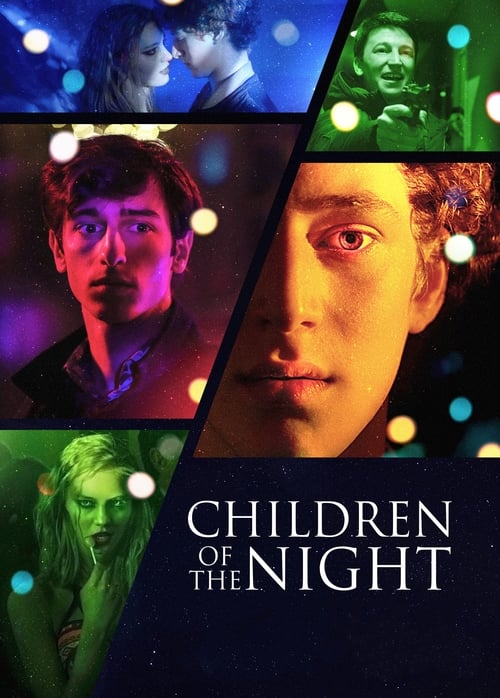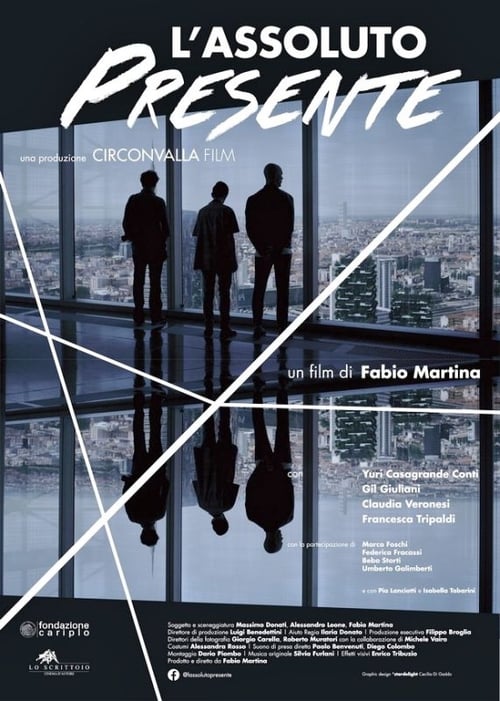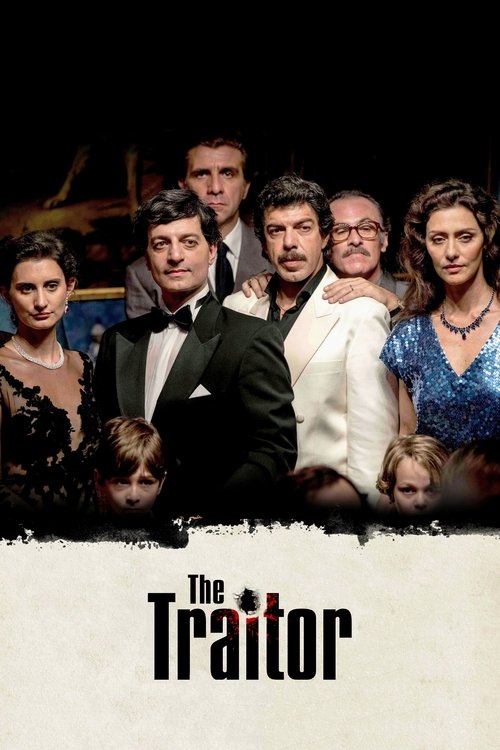
Ask Your Own Question
What is the plot?
The sun hangs low over Rome on June 22, 1983, casting long shadows across the cobblestone streets of the historic center. Emanuela Orlandi, a fifteen-year-old girl with dark eyes and a quiet smile, steps out of her music lesson, clutching her violin case. She is a citizen of Vatican City, daughter of Ercole Orlandi, a pontifical messenger, and her life is woven into the fabric of the Vatican's insular world. The city pulses with the usual rhythms--cars honking, church bells tolling, children laughing--but for Emanuela, this is the last day anyone will see her alive. She vanishes into the crowd, and the silence that follows is deafening. The streets, once vibrant, now feel hollow, as if the city itself holds its breath.
Cut to London, 2016. Maria, an Italian journalist naturalized in England, sits in a dimly lit office, the glow of her computer screen illuminating her face. Her editor, John, a man with a sharp gaze and a no-nonsense demeanor, slides a folder across the desk. "Maria, I need you to go to Rome. The Orlandi case--Emanuela Orlandi. It's been thirty-three years, and it's still unsolved. The world's forgotten, but someone has to keep digging." Maria hesitates, her fingers tracing the edge of the folder. "Why me?" she asks, her voice tinged with skepticism. John leans forward, his voice low. "Because you're Italian, you're relentless, and you don't take no for an answer. This story needs someone who won't let it die."
Maria arrives in Rome, the city's ancient stones whispering secrets as she walks through the same streets where Emanuela disappeared. The air is thick with the weight of history and unanswered questions. She meets Raffaella Notariale, a fellow journalist with a reputation for uncovering the truth, in a small café near the Vatican. Raffaella's eyes are weary but determined. "The Orlandi case is a labyrinth," she says, stirring her espresso. "The Vatican, the Banda della Magliana, Mafia Capitale--it's all tangled up. And the truth? It's buried so deep, no one knows if it'll ever see the light."
Maria's investigation begins with the official records. She pores over police files and court documents, each page a testament to the failures of the investigation. The disappearance of Emanuela Orlandi was not just a crime; it was a scandal that exposed the rot at the heart of Italian society. The Vatican, with its impenetrable walls and secretive corridors, is a constant presence. Maria visits the Vatican City, where she is met with stony silence and veiled threats. The officials, from the lowliest clerk to the highest archbishop, refuse to cooperate. "The truth lies in heaven," one priest tells her, his voice cold and dismissive. "Not in the hands of men."
As Maria digs deeper, she uncovers the central role of the Banda della Magliana, a powerful Roman criminal organization led by Enrico "Renatino" De Pedis. Flashbacks reveal De Pedis as a charismatic but ruthless figure, his eyes gleaming with ambition. He is introduced through testimonies and archival footage, his presence looming over the case like a shadow. Maria learns that De Pedis was not just a criminal; he was a man with connections to the highest echelons of power, including the Vatican. The Banda della Magliana's hideouts, scattered across Rome, are depicted as dens of intrigue and violence, where deals are made and lives are destroyed.
Maria's next stop is Sabrina Minardi's home. Sabrina, a former lover of De Pedis, is a key witness with intimate knowledge of the criminal underworld. The interview is tense, the air thick with unspoken secrets. Sabrina, played by Greta Scarano, is a woman haunted by her past, her eyes flickering with fear and regret. "De Pedis was involved," she admits, her voice barely above a whisper. "But I don't know the full story. He kept me in the dark, even from me." Maria presses her, her questions sharp and relentless. "Did he hurt Emanuela?" Sabrina hesitates, then shakes her head. "I don't know. But I know he was capable of anything."
The investigation leads Maria to the police stations and courts, where she confronts the institutional incompetence and corruption that have plagued the case for decades. The officials, from the local police to the national judiciary, are either unwilling or unable to provide answers. Maria's frustration grows, her determination hardening with each dead end. She meets Elettra Orlandi, Emanuela's sister, at a media studio where the family continues to appeal for information. Elettra's face is etched with grief and anger. "We've been fighting for thirty-three years," she says, her voice breaking. "And still, no one will tell us what happened to our sister."
The film's narrative is interwoven with archival footage and news clippings, each piece a fragment of the larger puzzle. Maria reviews the timeline, piecing together the events of June 22, 1983. The public reaction is palpable, the media frenzy a testament to the case's impact on Italian society. The Orlandi family's anguish is a central thread, their decades-long quest for answers a symbol of the human cost of institutional obfuscation.
As Maria's investigation progresses, she uncovers the web of Vatican financial scandals connected to the Orlandi case. The "God's Banker," Roberto Calvi, is referenced in archival footage and discussions. Calvi's mysterious death, found hanged under Blackfriars Bridge in London in 1982, is a pivotal moment in the story. His death is depicted as part of the larger conspiracy, a warning to those who dare to dig too deep. Maria learns that Calvi's financial dealings were intertwined with the Vatican's inner workings, and his death is a stark reminder of the dangers involved in uncovering the truth.
The film's climax centers on Maria's realization that, despite her exhaustive investigation, the full truth about Emanuela's disappearance remains buried beneath layers of criminal conspiracy, institutional silence, and time. The final confrontations see Maria directly challenging Vatican representatives and Roman authorities, but she is met with evasion and threats, underscoring the impenetrability of the power structures involved. In a tense scene, Maria confronts Paul Marcinkus, an American archbishop involved in Vatican financial affairs. Marcinkus, played by Randall Paul, is a man of authority and influence, his presence commanding respect and fear. "You think you can uncover the truth?" he asks, his voice dripping with condescension. "The truth is not for the likes of you. It lies in heaven."
Maria's journey is not just a quest for answers; it is a battle against the forces of crime and power that have conspired to keep the truth hidden. The film's emotional core is the Orlandi family's struggle, their public appeals and private grief a testament to the enduring impact of Emanuela's disappearance. The final scenes show Maria returning to London, her mission incomplete. The film closes with archival footage of Emanuela's family continuing their public appeals, and a title card noting that the case remains officially unsolved. The final message is one of unresolved justice: the truth, as the title suggests, "lies in heaven"--forever out of reach for those on earth.
The film's ending is haunting, a reminder that some mysteries are too deep, too dark, to ever be fully unraveled. The forces of crime and power are too entrenched, the layers of conspiracy too complex, for any single investigation to overcome. The audience is left with the image of a family and a nation still searching for answers, the truth forever elusive, lying in heaven.
What is the ending?
In the ending of "La verità sta in cielo," the unresolved mystery surrounding the disappearance of the young girls, including the protagonist's sister, remains haunting. The film concludes with a sense of ambiguity, leaving the audience to grapple with the implications of the events that have unfolded.
As the film approaches its conclusion, we find ourselves in a dimly lit room where the protagonist, a journalist named Giulia, is piecing together the fragments of the case that has consumed her life. The atmosphere is thick with tension and desperation. Giulia's determination to uncover the truth about her sister's disappearance drives her to confront the painful memories and the dark secrets that have been buried for years.
In a pivotal scene, Giulia meets with a former police officer who had been involved in the investigation. His weary demeanor and haunted eyes reveal the toll that the case has taken on him. He shares his doubts about the official narrative, hinting at a cover-up that has obscured the truth. Giulia's heart races as she realizes that the answers she seeks may be more sinister than she had anticipated.
The narrative shifts to a series of flashbacks that reveal the events leading up to the girls' disappearance. We see the innocence of the young girls, their laughter echoing in the streets, juxtaposed with the dark undercurrents of the adult world around them. The contrast heightens the emotional stakes, as Giulia grapples with the loss of her sister and the innocence of childhood.
In the final moments, Giulia stands alone in a desolate landscape, the weight of her quest heavy on her shoulders. The camera lingers on her face, capturing the mixture of hope and despair that defines her journey. As she gazes into the distance, the screen fades to black, leaving the audience with lingering questions about justice, truth, and the cost of uncovering dark secrets.
The film closes without providing definitive answers, emphasizing the unresolved nature of the case and the emotional scars left on those who seek the truth. Giulia's fate remains uncertain, mirroring the unresolved fates of the missing girls, and the haunting question of what truly happened lingers in the air.
In summary, the ending of "La verità sta in cielo" encapsulates the film's exploration of loss, the pursuit of truth, and the shadows that linger in the wake of tragedy.
Is there a post-credit scene?
The movie "La verità sta in cielo" does not have a post-credit scene. The film concludes its narrative without any additional scenes or content after the credits roll. The story wraps up with a focus on the unresolved mysteries surrounding the disappearance of the young girls, leaving the audience with a sense of lingering questions and emotional weight regarding the events depicted throughout the film.
What role does the character of Emanuela Orlandi play in the story?
Emanuela Orlandi is a central figure in 'La verità sta in cielo,' representing the mystery surrounding her disappearance. The film portrays her as a young girl who vanishes under mysterious circumstances, which leads to a deep investigation into her life and the political and religious implications of her case. Her character embodies innocence and the tragic consequences of a system that fails to protect its most vulnerable.
How does the film depict the relationship between Emanuela's family and the Vatican?
The film illustrates a strained relationship between Emanuela's family and the Vatican, highlighting the family's desperation for answers regarding her disappearance. The Orlandi family is portrayed as being frustrated and feeling abandoned by the Church, which they believe holds crucial information about Emanuela's fate. This tension adds emotional depth to the narrative, showcasing the family's struggle against powerful institutions.
What is the significance of the character of the journalist in the film?
The journalist in 'La verità sta in cielo' serves as a crucial narrative device, representing the pursuit of truth in a convoluted and often dangerous landscape. His investigation into Emanuela's case reveals the layers of corruption and secrecy surrounding the Vatican. The journalist's determination and moral compass drive the story forward, as he risks his safety to uncover the truth, reflecting the broader themes of justice and accountability.
How does the film portray the impact of Emanuela's disappearance on the community?
The film depicts the profound impact of Emanuela's disappearance on her community, showcasing a mix of fear, anger, and a sense of helplessness among the residents. Vigils and protests are organized, illustrating the collective grief and the demand for justice. This communal response highlights the broader societal implications of her case, as it resonates with themes of loss and the quest for truth in a seemingly indifferent world.
What are the key moments that reveal the political implications of Emanuela's case?
Key moments in the film reveal the political implications of Emanuela's case through flashbacks and interviews that connect her disappearance to larger issues within the Vatican and Italian politics. These moments include discussions about the Church's influence, the involvement of powerful figures, and the cover-ups that ensue. The film intricately weaves these elements into the narrative, suggesting that Emanuela's fate is intertwined with a web of corruption and secrecy that extends beyond her personal tragedy.
Is this family friendly?
"La verità sta in cielo" is a film that deals with heavy themes and real-life events surrounding the mysterious disappearance of a young girl, which may not be suitable for children or sensitive viewers.
Potentially objectionable or upsetting aspects include:
-
Themes of Abduction and Disappearance: The central plot revolves around the unsettling topic of a child's disappearance, which can be distressing for younger audiences.
-
Emotional Distress: Characters experience significant emotional turmoil, including grief, despair, and anxiety, which may be intense for sensitive viewers.
-
Violence and Threatening Situations: There are scenes that depict violence or the threat of violence, contributing to a tense atmosphere.
-
Mature Themes: The film explores complex adult themes such as corruption, betrayal, and the impact of trauma, which may be difficult for children to understand.
-
Dark Atmosphere: The overall tone of the film is somber and can evoke feelings of sadness and discomfort.
Due to these elements, the film may not be considered family-friendly and could be upsetting for younger viewers or those sensitive to such themes.








